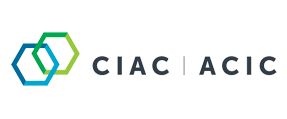CIAC receives funding from Transport Canada to support railway safety across Canada
January 07, 2020
The Chemistry Industry Association of Canada (CIAC) is pleased to announce Transport Canada’s Railway Safety Improvement Program (RSIP) will provide $219,750 in financial support over three years to help CIAC improve railway safety and education in communities across Canada.
The CIAC and its Transportation Community Awareness and Emergency Response initiative (TRANSCAER®) partners, including the Railway Association of Canada, successfully applied for funding to support three key activities that are focused on improving railway safety and training for people and communities along transportation routes.
The three key activities include:
- Construction of a new TRANSCAER® Safety Train—a railway tank car that will be converted into a classroom on wheels for the purpose of training emergency responders. The original Safety Train was retired in 2018. The pioneering concept has since been adopted by other organizations across North America and around the world.
- Development of advanced training tools—including virtual reality educational tools—that will allow state-of-the-art training and education in even the most remote communities. These enhanced learning and virtual reality training tools will help reach underserved regions of the country, such as the North, where the transit of the TRANSCAER® Safety Train may be more challenging.
- Delivering a Canada-wide series of training sessions for our target audiences using these new tools.
“Canada’s chemistry sector relies on the country’s railways to ship roughly 80 per cent of its production, including dangerous goods,” said Bob Masterson, President and CEO, CIAC . “This funding allows the CIAC and our TRANSCAER® initiative to reach, train, and educate even more stakeholders and communities across the country making sure they are informed about the products being moved through their area by rail, and what measures are in place to ensure their safe transportation.”
The enhanced educational tools and outreach efforts will focus on a variety of audiences in communities across the country, including first responders, community leaders, the general public, and Indigenous communities.





